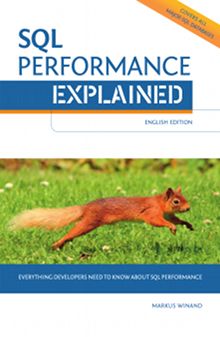SQLite is an undervalued database—some people even believe it is a toy database that is not suitable for production use. In fact, SQLite is a very solid database that can handle terabytes of data, but it doesn’t have a network layer.
SQLite is “just” a library, not a server. That, of course, makes it inappropriate for some use cases, and at the same time it makes it the best fit for many other use cases. Really…many other use cases. SQLite even claims to be the most widely deployed and used database engine. I guess that is only possible because SQLite is in the public domain. SQLite is your go-to solution whenever you want to use SQL to store structured data in a file.
The SQL dialect of SQLite is also very strong. For example, it introduced the with clause four years before MySQL did. Lately, it has even added window functions—just five months after MySQL did the same.
This article covers the SQL enhancements that were added to SQLite in 2018, i.e. the new SQL features introduced in versions 3.22.0 through 3.26.0.
Contents:
Boolean Literals and Tests
SQLite has “fake” Boolean support: it accepts Boolean as a type name, but it treats it as an alias for an integer (very much like MySQL does). The truth values true and false are represented by the numerical values 1 and 0, respectively (like in C).
Starting with release 3.23.0, SQLite understands the keywords true and false as synonyms for the values 1 and 0 and supports the is [not] true|false test. The keyword unknown is generally not supported. You can use null instead because the values unknown and null are the same for Boolean values.
The literals true and false can greatly improve the readability of values and set clauses in insert and update statements.
The is [not] true|false test is useful because it has a different meaning than the corresponding comparison operations:
WHERE c <> FALSEvs.
WHERE c IS NOT FALSEIf c is the null value, the result of the condition c <> false is unknown. As the where clause only accepts true values, but rejects false as well as unknown values, it will remove those rows from the result.
In contrast, the result of c is not false is also true if c is the null value. The second where clause will thus also accept rows where c has the null value.
Another way to select the same rows is to accept the null case separately.
WHERE c <> FALSE
OR c IS NULLThis variant is longer and has some redundancy (c is mentioned twice). To make a long story short, the is not false test can be used to avoid such or … is null constructs. More about this in “Binary Decisions Based on Three-Valued Results”.
If you like this page, you might also like …
… to subscribe my mailing lists, get free stickers, buy my book or join a training.
The support of Boolean literals and Boolean tests in SQLite is now close to that of other open source databases. The only gap is that SQLite does not support the is [not] unknown test (use is [not] null instead). Interestingly, these features are generally not available in the commercial products shown below.
- Only
trueandfalse, notunknown. Usenullinstead - No
is [not] unknown. Useis [not] nullinstead
Window Functions
SQLite 3.25.0 introduces window functions. If you know window functions, you also know that this is a big deal. If you don’t know window functions, learn how to use them! This article is not the right place to explain window functions, but trust me: it is the most important “modern” SQL feature at all.
SQLite’s support of the over clause is pretty close to that of other databases. The only notable limitation is that range frames don’t support numeric or interval distances (only current row and unbounded preceding|following). This is the same limitation SQL Server has, and PostgreSQL had at the time when SQLite 3.25.0 was released. In the meantime, PostgreSQL 11 has lifted this limitation.
- No chaining of window definitions
- No
<distance>(onlyunboundedandcurrent row) and no date and time types
The set of window function supported by SQLite is pretty much at a state of the art level. The main omissions (distinct in aggregates, width_bucket, respect|ignore nulls, and from first|last) are also missing in some other products.
DISTINCTaggregates not supported- Also without
ORDER BYclause - No
respect|ignore nulls - No negative offsets • Proprietary nulls treatment:
lead(<expr>, 'IGNORE NULLS')(it’s a string argument) - Proprietary nulls treatment:
lead(<expr> IGNORE NULLS)(no comma) - No negative offsets
- No default possible (3rd argument) • No
respect|ignore nulls - No negative offsets • No
ignore nulls - Proprietary nulls treatment:
first_value(<expr> IGNORE NULLS)(no comma) - Proprietary nulls treatment:
first_value(<expr>, 1, null, 'IGNORE NULLS')(it’s a string argument) - No
ignore nulls - Proprietary nulls treatment:
nth_value(<expr>, <off> IGNORE NULLS)(no comma) • Nofrom last - No
ignore nulls• Nofrom last
Filter Clause
Even though the filter clause is just syntax sugar—you can easily use case expressions for the same result—I think it’s essential syntax sugar because it makes learning and understanding a lot easier.
Just look at the following select clauses. Which one is easier to understand?
SELECT SUM(revenue) total_revenue
, SUM(CASE WHEN product = 1
THEN revenue
END
) prod1_revenue
...vs.
SELECT SUM(revenue) total_revenue
, SUM(revenue) FILTER(WHERE product = 1) prod1_revenue
...This example pretty much summarizes what the filter clause does: it is a suffix for aggregate functions that conditionally removes rows before the aggregation. The pivot technique is the most common use case of the filter clause. That includes transforming attributes from the entity-attribute-value (EAV) model into columns. Learn more about it in “filter: Selective Aggregates”.
SQLite 3.25.0 introduced the filter clause for aggregate functions that use the over clause—not for aggregates that use group by. Unfortunately, that means that you still cannot use filter for the above mentioned use cases in SQLite. You have to revert to case expression as before. I truly hope that changes soon.
Insert … on conflict (“Upsert”)
SQLite 3.24.0 introduced the so-called “upsert”: an insert statement that allows graceful handling of primary key and unique constraint violations. You can choose to either ignore these errors (on conflict … do nothing) or update the existing rows (on conflict … do update …).
This is a proprietary SQL extensions, i.e. it is not part of the SQL standard and therefore gray in the matrix below. However, SQLite uses the same syntax as PostgreSQL for this feature.0 The standard offers the merge statement for this and other use cases.
Unlike PostgreSQL, SQLite has a problem with the following statement.
INSERT INTO target
SELECT *
FROM source
ON CONFLICT (id)
DO UPDATE SET val = excluded.valAccording to the documentation, the problem is that “the parser does not know if the token "ON" is part of a join constraint on the SELECT, or the beginning of the upsert-clause.” This can be resolved by adding another clause to the query, e.g. where true.
INSERT INTO target
SELECT *
FROM source
WHERE true
ON CONFLICT (id)
DO UPDATE SET val = excluded.val- Also
log errorsforinsert,update,delete, andmerge(“DML error logging”) On conflictmust not immediately follow thefromclause of a query. Addwhere trueif needed- ⚡Ambiguities not always reported
- Not all operations • ⚡Ambiguities not always reported • Not all syntax variants
- Not all operations
Rename Column
Another proprietary feature that SQLite introduced is the ability to rename columns in base tables.1 The SQL standard does not offer such functionality.2
SQLite follows the syntax commonly used by other products to rename columns:
ALTER TABLE … RENAME COLUMN … TO …Other News
Besides the SQL changes, there were also some API changes in SQLite in 2018. Please refer to the news section on sqlite.com for all details.

